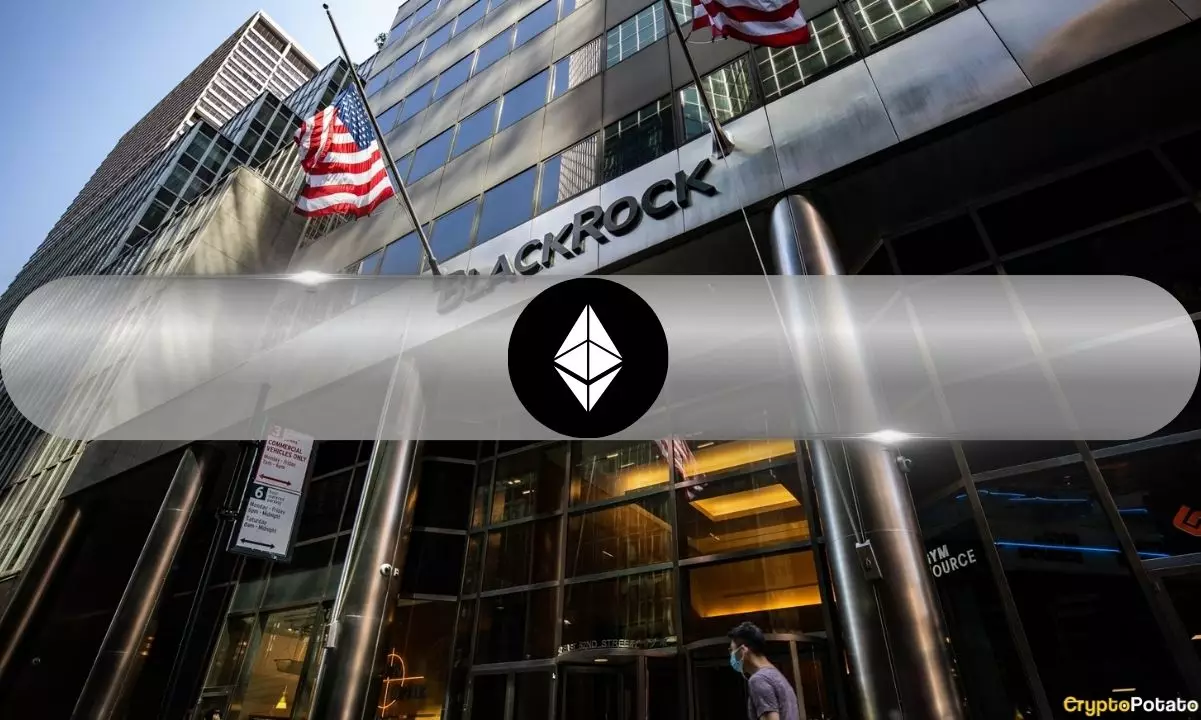In a stunning development, Ethereum has garnered the interest of one of the world’s largest asset management companies, BlackRock. Former Ethereum developer Eric Connor referred to BlackRock’s recent SEC filing on April 28 as a “monster win” for Ether. This prospectus seeks to tokenize a staggering $150 billion Treasury Trust market fund with new digital assets known as “DLT Shares.” Such a move represents potentially the most significant influx of real-world assets into the Ethereum ecosystem. However, while this may sound like a triumph, it raises questions about the sustainability of Ethereum’s current standing and whether this is a mere flash in the pan.
For those who may not be acquainted, the BlackRock Treasury Trust Fund is a money market fund that operates with a laser focus on preserving liquidity while maintaining a low-risk investment profile via short-term US Treasury securities. The introduction of DLT shares will leverage the power of blockchain technology to enhance transparency and efficiency in ownership tracking. The involvement of BNY Mellon as a partner will likely add credibility to the endeavor but also begs the question: Is this the start of a trend where traditional institutions throw their weight behind Ethereum, or is it simply marketing maneuvering aimed at pacifying skeptics?
Tokenization: A Game Changer or Overhyped Trend?
BlackRock is not just dabbling in tokenization; they are all in. Their CEO, Larry Fink, candidly stated that “tokenization will revolutionize investing.” While these remarks ignite enthusiasm, they also evoke skepticism in circles wary of hype surrounding blockchain technologies. The ability to execute transactions in seconds as opposed to days seems promising. However, the real question remains: Can Ethereum handle the load? The current market dominance of Ethereum in the real-world asset tokenization scene, pegged at 56%, indicates that it is already the leader. But does that leadership translate into stability in a volatile market?
The inherent volatility of Ether is disconcerting, especially as current prices linger around lows reminiscent of 2023. Even with institutions warming up to what some consider “cut-price Ether,” the analysts are faced with a daunting task: predicting whether a five-figure price for Ether is a realistic target or simply a pipe dream. The numbers paint a dismal picture; Ether is still down 63% from its all-time high in 2021 and has yet to reclaim the promise of the previous bull runs. Therefore, are these institutional investments a validation of Ethereum, or are they reflective of institutions capitalizing on a bottomed-out asset?
Institutional Interest: A Double-Edged Sword
The recent surge in institutional interest—from BlackRock’s strategic investments to their spot ETH ETF accumulating significant assets—can be a double-edged sword. On one hand, these moves are often heralded as signals that Ethereum is gaining legitimacy and traction in the traditional finance spectrum. But on the flip side, the question arises: Are institutions merely attempting to manipulate the market in their favor?
The mention of a 93% ownership stake in BlackRock’s USD Institutional Digital Liquidity Fund on Ethereum suggests that institutional players are embedding their interests deeply within the Ethereum network. While that’s promising, it could also lead to centralized control over a technology that was fundamentally designed to promote decentralization. The irony of institutions flocking to Ethereum—a network built on the tenets of decentralization—is not lost on astute observers.
As Ethereum stands at this pivotal crossroads, ambitious proclamations from industry leaders like Connor, Waidmann, and Fink illustrate a complex narrative—a far cry from the bullish fervor that dominated the crypto conversations of 2021. The question now transcends mere price predictions and dips into how firmly Ethereum can anchor itself in an ecosystem that is plagued by rapid shifts in sentiment. While supporters may rally behind the notion that Ethereum is gearing up for monumental growth, the skeptics remain cautious, examining the fine print of institutional involvement. The ultimate verdict will rest not solely on price but on Ethereum’s capability to remain resilient amidst evolving landscapes and newly emerging challenges.
















Leave a Reply